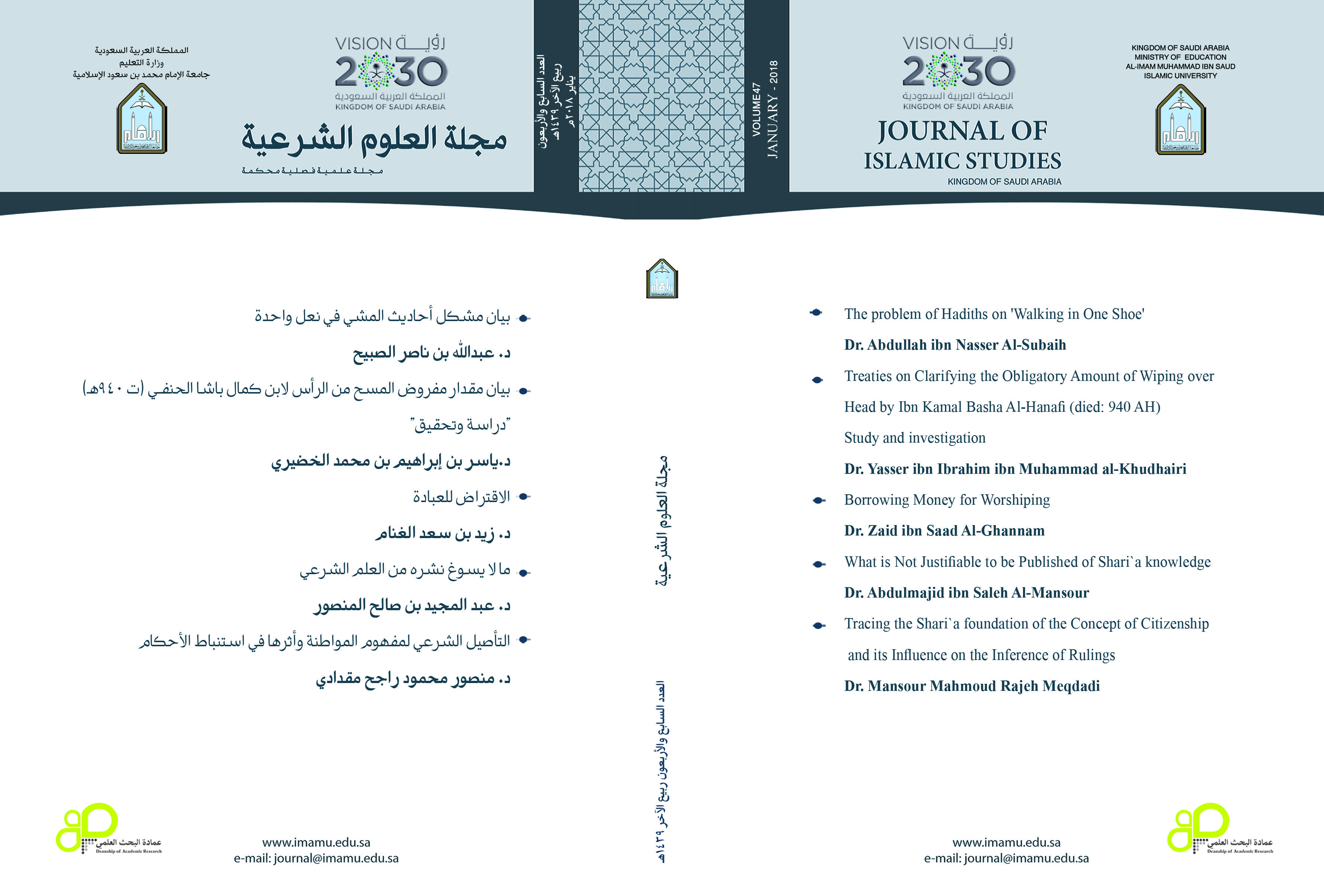The problem of Hadiths on 'Walking in One Shoe'
Abstract
This research paper comprises an introduction, six themes, a conclusion, and indexes. Introduction: It shows the importance of the subject, the reasons for selecting it, the purpose of the study, a review of previous studies, the research proposal and methodology. First theme: Traceable hadiths on the prohibition of walking in one shoe, including hadith of Abu Hurairah, Jaber ibn Abdullah, Abi Sa`id al-Khudri, Abdullah ibn `Abbas, and Shaddad ibn Aws.
Second theme: Traceable hadiths on walking in one shoe, including hadith of Aisha, Ali ibn Abi Taleb, and Mursel Abi al-Malih ibn Osama al-Huthali.
Third theme: Traditions of the companions on walking in one shoe, including the tradition of Ali ibn Abi Taleb, Abdullah ibn Omar, and Aisha. Fourth theme: Ruling on walking in one shoe. It is narrated by more than one of the scholars that walking in one shoe is unanimously disapproved, not forbidden, except for Ahlu azh-Zhahir. Fifth theme: Combining the prohibition on walking in one shoe, and the narration that states that the Prophet did so: there is no contradiction in the traceable hadiths on walking in one shoe, because the authenticated hadiths state that walking in one shoe is forbidden, while the hadiths that state that it is permissible to walk in one shoe are doubtful hadiths. By assuming the validity of the hadiths which state that it is permissible to walk in one shoe, and the well-authenticated traditions of the companions, it is possible to combine them with the well-authenticated hadiths that state that walking in one shoe is forbidden in many ways, as written in the research. Sixth theme: The reasons for forbidding walking in one shoe. Conclusion: It includes the main research findings followed by the relevant indexes.




